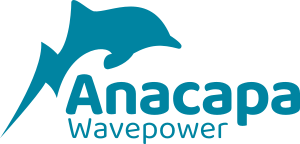Anacapa WECs
Anacapa wave energy converters (WECs) have arrived from a control-co-design inspired approach using the potential of advanced control formulations to lead the design through an iterative process guided by an objective of minimizing levelized cost of energy.
There has been significant, LCoE inspired evolution of all sub-systems since inception of development in 2008. Technical changes have been undertaken in a considered and thorough manner.
Advanced controls
Collaborative research with industrial and academic partners has given Anacapa an advanced control strategy utilizing Model Predictive Control (MPC), unlocking WEC potential.
Low mass
Using advanced controls, the Anacapa WEC is capable of effectively operating in a wide band of WEC mechanical response frequency, excitation frequency pairs, allowing for low mass WEC bodies.
Modular
The WEC components are modular allowing application specific flexibility both in scale and number of degrees of freedom.

Background
WECs have historically been equipped with relatively simple controllers, holding back the potential energy capture of the machine. In part this was due to a lack of research into applying advanced control methodologies, but more pressingly in recent years it has been due to hardware limitations.
WEC power take-off (PTOs), the systems that convert mechanical wave energy to electricity, often implement hydraulics or mechanical transmissions to convert linear motion induced by wave energy into rotary motion for electrical conversion. This additional mechanical layer reduces controllability.
The result of the lack of control and PTO capability is fundamentally limiting to the potential of a WEC, and for this reason, the Anacapa team understood early-on that advancement in WEC PTO technology would greatly, and immediately, expand annual energy production (AEP), while enabling a less restrictive WEC design framework.

Luma
Power Take-Off
Anacapa, in partnership with McCleer Power, have developed a high-performance power take-off for ocean wave energy conversion, enabling high-efficiency, controllable direct-drive power conversion at high forces and low velocities. This technology, packaged together as a linear, universal modular actuator/absorber (Luma), will enable a new generation of performance-optimized wave energy converters, expanding the horizons of achievable Levelized Cost of Energy in the sector.
Efficient & Reliable
At the heart of the Luma PTO system is a direct drive permanent magnet linear motor/generator, which yields high-efficiencies at low speeds and high forces, while being mechanically simple with few failure prone components
Controllable
The Luma PTO system offers operation in four quadrants of control enabling advanced control methodologies, while being finely controllable in both force and position control applications.
Scalable
All the system components are inherently modular and scalable. The Luma PTO system stroke and force capabilities can be configured to suit the application all the way from prototype to utility scale.
Technology development
Anacapa has been developing the patented Luma PTO technology for several years. Performance has been computed through numerical and finite-element models. In 2021, a 60kW, 2m stroke prototype PTO was built and validated through experimental testing at the National Renewable Energy Laboratory (NREL).

